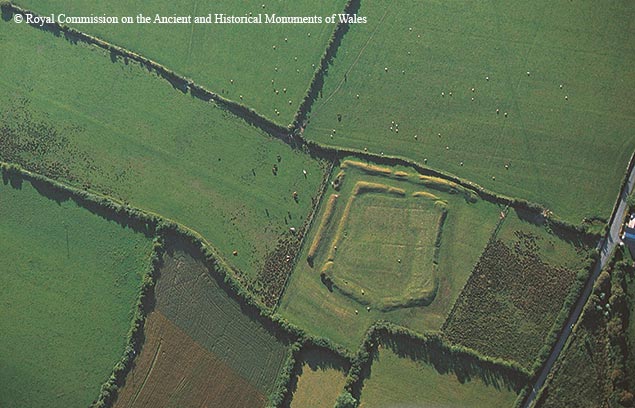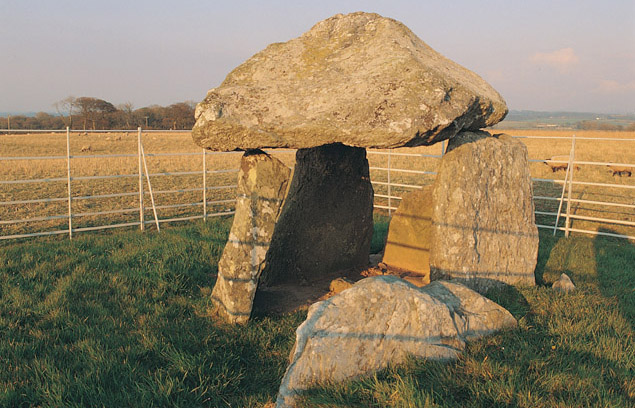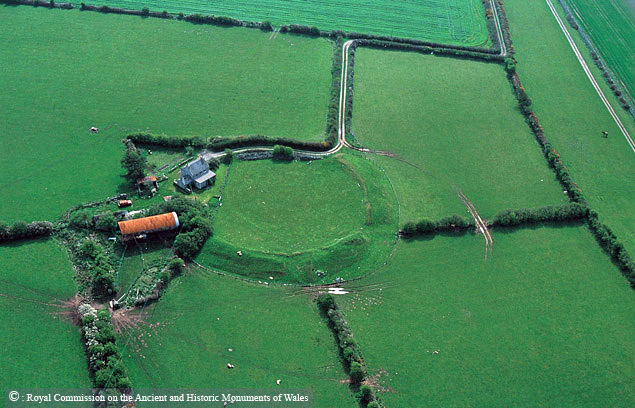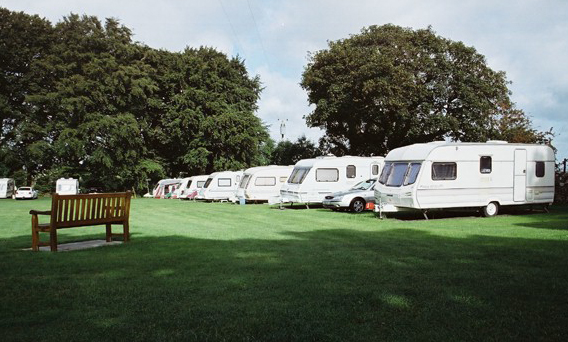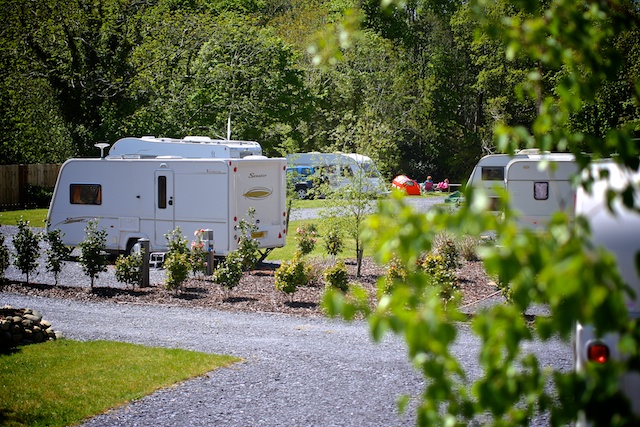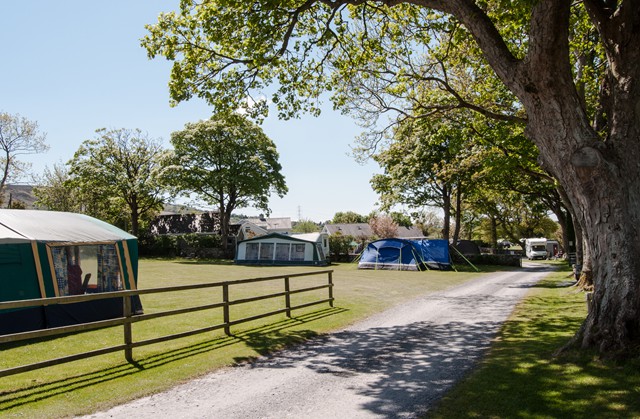A secluded park in an ideal location for visiting the glorious nearby beaches, historic…
Our View
The name of his historic site means ‘the mound in the dark grove’. It was plundered in 1699 and excavated by archaeologists between 1928 and 1929. During the neolithic period a stone circle and henge stood at the site. An area of burnt material containing a small human bone from the ear, covered with a flat stone, was recovered. The stones were removed in the early Bronze Age when an archetypal passage grave was built over the top of the centre of the henge. A carved stone with a twisting, serpentine design stood in the burial chamber. It has since been moved to the National Museum of Wales in Cardiff and replaced with a replica standing outside. An earth barrow covering the grave is a 20th-century restoration; the original was probably much bigger and believed to have been built to mark the summer solstice. Photo credit: © Crown copyright (2015) Cadw
Facilities – at a glance
Assist dogs allowed
Features
- Parking onsite
- Facilities: Approximately 500 metre walk on footpath
- Open all year
- Opening Times: Open all year, daily 10-4 (last admission 3.30). Closed 24-26 Dec & 1 Jan
Also in the area
About the area
Discover Isle of Anglesey
Some of the oldest rocks in Britain form the 125-mile coastline of the 85 square mile Anglesey Area of Outstanding Natural Beauty, which includes Holy Island with its busy port of Holyhead, the terminus for the Dublin ferry. The terrain inland is mainly a fertile plateau worn flat by the action of the sea, with low ridges and shallow valleys, while the sheer limestone cliffs of the east coast and on the north coast at Holyhead Mountain represent some of the most spectacular sea cliffs in Britain.
On the steep northern and eastern cliffs, guillemots, choughs, cormorants and razorbills nest, while on the huge precipice of Gogarth Bay on lighthouse-topped South Stack (Ynys Lawd) on Holyhead Mountain, expert rock climbers now find their sport where local people formerly harvested gulls’ eggs from the vertiginous ledges.
Anglesey has a wealth of prehistoric remains. On the slopes of Holyhead Mountain, a collection of over 50 hut circles and rectangular enclosures, known as Cytiau’r Gwyddelod (Irishmen’s Huts), are thought to date from the Bronze Age and were still in use in Romano-British times, and many finds indicate the wealth of Iron Age culture on the island.
Nearby stays
Places to Stay
Dining nearby
Restaurants and Pubs
Why choose Rated Trips?
Your trusted guide to rated places across the UK
The best coverage
Discover more than 15,000 professionally rated places to stay, eat and visit from across the UK and Ireland.
Quality assured
Choose a place to stay safe in the knowledge that it has been expertly assessed by trained assessors.
Plan your next trip
Search by location or the type of place you're visiting to find your next ideal holiday experience.
Travel inspiration
Read our articles, city guides and recommended things to do for inspiration. We're here to help you explore the UK.



